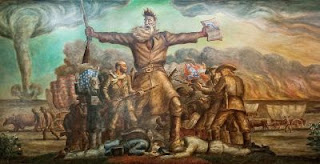4/30-5/1 Monday-Tuesday

Guiding Question: How did the election of Abraham Lincoln lead to Civil War? Objectives: Collaborative: Students will learn about the election of Abraham Lincoln and the South's secession by collaboratively reading and completing multiple choice-justification questions with at least 80% accuracy. Independent: Students will understand Abraham Lincoln by reading & watching sources closely and answering questions with at least 80% accuracy. Standards: 8.10 Students analyze the multiple causes, key events, and complex consequences of the Civil War. CCRA.R.1 – Read closely to determine what the text says explicitly and to make logical inferences from it; cite specific textual evidence when writing or speaking to support conclusions drawn from the text. ELD B.6 - Reading closely to determine how meaning is made. Do Now (Voice Level 0) 5 minutes: On your objective tracker, dissect the objectives you will be working to com...





